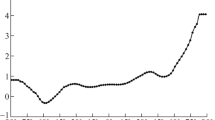Abstract
Climate is a term referring to long-term patterns of weather conditions, and it is sometimes difficult to say where weather ends and climate begins. There is abundant evidence that climates have changed significantly in the past and that these were driven by a great complex of natural and usually interlinked processes with strong feedback mechanisms. It is a complex science. There is now clear evidence that human impact on land cover and environmental systems, through economic activity, have added a new driver of climate trends and variability. The best science we have informs us that certain kinds of extremes will occur more frequently and generally upward trends in temperature will disrupt many environmental and socio-economic systems. Records from the past show that many societies failed to recognize the onset of new trends in climate and lived in denial of change until it was too late. Humans now live in a globalized world of linked economies, resources, information, and agriculture and we are vulnerable together. The scale of the projected changes requires global cooperation and action for solutions. The cost of abatement or adaptation increases greatly as action is deferred. Only national governments can direct the scale of changes required, and few have done this. Are we being forced to follow the old behavioral pattern of denial on a global scale?
Access this chapter
Tax calculation will be finalised at checkout
Purchases are for personal use only
Similar content being viewed by others
References
Garnaut R (2008) The Garnaut Climate Change Review. Cambridge: Cambridge University Press.
Haug GH, Gunther D, Peterson LC, Sigman DM, Hughen KA, Aeschlimann B (2003) Climate and the collapse of Maya civilization. Science 299:1731–1735.
Hodell DA, Curtis JH, Brenner M (1995) Possible role of climate in the collapse of classic Maya civilization. Nature 375:391–394.
Intergovernmental Panel on Climate Change (2007) Climate Change 2007. Cambridge: Cambridge University Press.
NASA (2010) GISS (Goddard Institute for Space Studies) surface temperature analysis. http://data.giss.nasa.gov/gistemp
Rosenmeier MF, Hodell DA, Brenner M, Curtis JH, Guilderson TP (2002) A 4000-year lacustrine record of environmental change in the southern Maya lowlands, Petén, Guatemala. Quat Res 57:183–190.
Stern N (2006) The Economics of Climate Change. Cambridge: Cambridge University Press.
Author information
Authors and Affiliations
Corresponding author
Editor information
Editors and Affiliations
Rights and permissions
Copyright information
© 2010 Springer Science+Business Media B.V.
About this chapter
Cite this chapter
Dodson, J. (2010). Setting the Scene: How Do We Get to a Fitting Future?. In: Dodson, J. (eds) Changing Climates, Earth Systems and Society. International Year of Planet Earth. Springer, Dordrecht. https://doi.org/10.1007/978-90-481-8716-4_1
Download citation
DOI: https://doi.org/10.1007/978-90-481-8716-4_1
Published:
Publisher Name: Springer, Dordrecht
Print ISBN: 978-90-481-8715-7
Online ISBN: 978-90-481-8716-4
eBook Packages: Earth and Environmental ScienceEarth and Environmental Science (R0)




